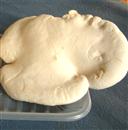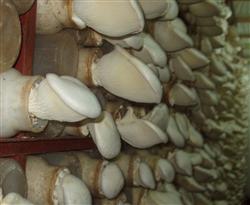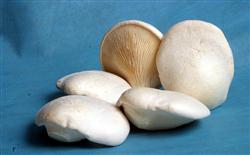Why does bailing mushroom have deformity?

Why does bailing mushroom have deformity? Please introduce the reasons and control methods Bailing mushroom products are generally listed before and after New Year's Day to the Spring Festival, its quality is the best and the mushroom price is the best. Growers everywhere feel the pulse of the market to strive for more mushrooms and good mushrooms. However, the common problems such as late emergence of mushrooms, non-emergence of mushrooms or abnormal mushrooms have become common concerns of growers. It is a common problem that deformed mushrooms reduce the product grade, even lose the commodity value, and affect the economic benefits of the growers. Common malformed mushrooms have mushroom lid clasping "fist shape", stalk long fat thick lid small "vase shape", lid sunken and cracked outer roll "broken bowl", lid narrow and long "ox tongue", lid surface spot "hemp face", tumour protruding "bloating belly shape", two lids and spreading handle tightly connected with "butterfly shape", lid bending uneven "wavy edge", lid round wrapping bacteria fold contraction "bald shape", cover longitudinal split groove seam "flower mushroom shape". Several mushrooms are in the shape of a lotus flower. In addition, there are mushroom body atrophy, mushroom body yellow discoloration and so on. The reason for the development of deformed Pleurotus ostreatus is that the culture environmental conditions do not meet the physiological and biochemical requirements of Pleurotus ostreatus. The key lies in the poor coordination of temperature, humidity, light and gas during the mushroom emergence period, operational errors in management technology, and so on. The following is a specific analysis, and puts forward the corresponding measures to avoid the occurrence of deformed mushrooms. I. The structure of the shed is unreasonable. The existing cultivation places of Pleurotus ostreatus are indoor mushroom house and field mushroom shed. The construction is simple and the structure is unreasonable. Some mushroom houses have one-way doors and windows, and some vents are opened in the upper half of the wall, resulting in poor indoor air circulation; although there are vents on both sides of some plastic sheds, they are facing both ends of the fungus wall; and some have vents, but in order to keep warm, they are never opened. Due to poor ventilation in the shed, resulting in serious hypoxia, resulting in gas-loving Pleurotus ostreatus into deformity. Second, the improper stacking of the bacterial wall shows that the bacterial bag into the shed wall is too high, 10 bags a yard, more than 1 meter; some bacterial walls are filled with clayey soil, which is not breathable; some are not watered enough to dry after filling; some bacterial walls are palletized too densely and do not fill the soil in the middle; in some cases, when building the wall, the bag head is not able to cut the film, and the part that enters the wall is cut only 1 inch and 3 too little, while the exposed end cuts the film, and the mycelium is exposed and does not moisturize. The growth and development of these fruiting bodies must be inhibited. For example, the wall of the northern bacterial bag is stacked, the soil between the bags is insufficient, the water is dry when heating up the buds in the cold winter, and the water content in the bacterial bag is small, which makes the mycelium dehydrated and the abnormal mushroom in which the cover is not extended or shrunk. On the other hand, the clayey soil has poor air permeability, which can not regulate the mycelium, but hinders the normal physiological reproduction. 3. There are four manifestations of congenital nutritional defects: cottonseed hull and wheat bran in ① formula are aged by damp mildew and nutrient degradation, the amount of nitrogen-containing wheat bran in the formula is too small, there is no adverse reaction in the early stage of mycelium growth, and can not meet the requirements in the long mushroom stage; ② medium rancidity; water evaporation mycelium dehydration in ③ bag. These are congenital malnutrition, so the mushroom lid is wavy or uncovered, and the color is yellowish and not white. 4. The uncertainty of the due date is often due to the cultivation of mushroom heart-cutting, mycelium physiology is not mature into the artificial bud, resulting in preterm birth deformity. 5. After the physiological maturity of the mycelium, we need 0: 13 ℃ low temperature stimulation for 10-15 days, and during this period, we need more than 10 ℃ temperature difference stimulation for 5-7 days to force the primordium to differentiate into mushroom buds. This is a distinctive feature of Pleurotus ostreatus. Growers often do not master this unique species, low temperature squatting period is insufficient, differential temperature stimulation is not enough, inconsistent with the physical and chemical requirements of the reproductive stage, resulting in fruit body development is resisted and deformed. Some enter the shed in early December to promote buds, in order to keep warm, lack of ventilation, serious hypoxia in the shed, the result is full of mushroom stalks up to 20 centimeters long, mushroom cover clenched, full of "fist mushrooms." Six. Some people were overjoyed to see that the mushroom buds were overjoyed, knowing that the mushroom buds were too dense to take them off. Some people worry that picking one bud will affect others; others leave too many buds. Due to the neglect of sparse buds and the crowding of mushrooms, there are some variations, such as twin butterfly shape, laterally tilted ox tongue, camel-backed mushroom and so on. 7. Poor management during the growing period, the mushroom buds gradually differentiate into fruiting bodies. During this period, the mushroom body is often poorly regulated by temperature, light and gas, resulting in oblique growth of the mushroom body, or hunchback or sunken cover, or spotted pockmarked face, discoloration, and harvest expiration. The mushroom body is too large to meet the grade. Click to get more Pleurotus ostreatus planting technology click to get more edible mushroom planting technology
- Prev

Environmental Requirements for Cultivation of Pleurotus nebrodensis in Autumn and Winter
What are the requirements for the environment for the cultivation of white mushroom in autumn and winter? The requirements of greenhouse for planting Pleurotus nebrodensis in autumn and winter are as follows: solar greenhouse or idle house can be used as fruiting facilities for Pleurotus nebrodensis, both of which have one thing in common, that is, they must meet the fruiting temperature above 8℃ in low temperature period. Take the mushroom shed as...
- Next

How to prevent and control diseases and insect pests of white mushroom without pollution?
How to prevent and control diseases and insect pests of white mushroom without pollution? Please introduce the control method of white mushroom pest pollution-free control, from the integrated control work white mushroom pest control to implement the "prevention first, integrated control" plant protection policy. Specific should put good strain quality close, select high resistance, multi-resistant varieties; do a good job.
Related
- Fuxing push coffee new agricultural production and marketing class: lack of small-scale processing plants
- Jujube rice field leisure farm deep ploughing Yilan for five years to create a space for organic food and play
- Nongyu Farm-A trial of organic papaya for brave women with advanced technology
- Four points for attention in the prevention and control of diseases and insect pests of edible fungi
- How to add nutrient solution to Edible Fungi
- Is there any good way to control edible fungus mites?
- Open Inoculation Technology of Edible Fungi
- Is there any clever way to use fertilizer for edible fungus in winter?
- What agents are used to kill the pathogens of edible fungi in the mushroom shed?
- Rapid drying of Edible Fungi

